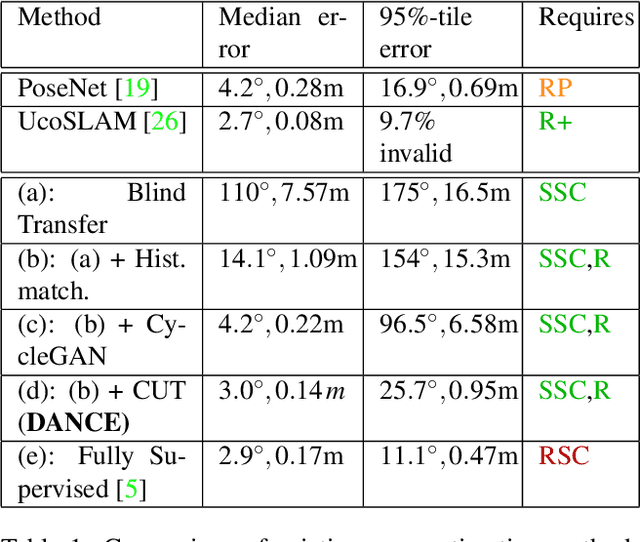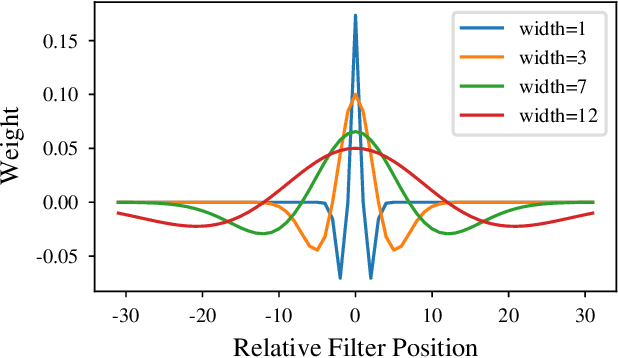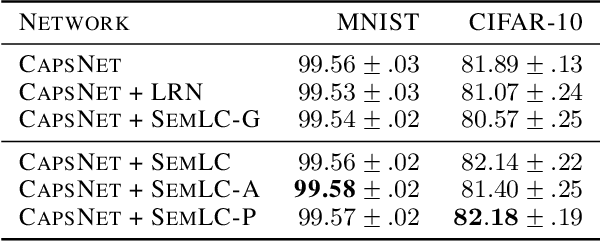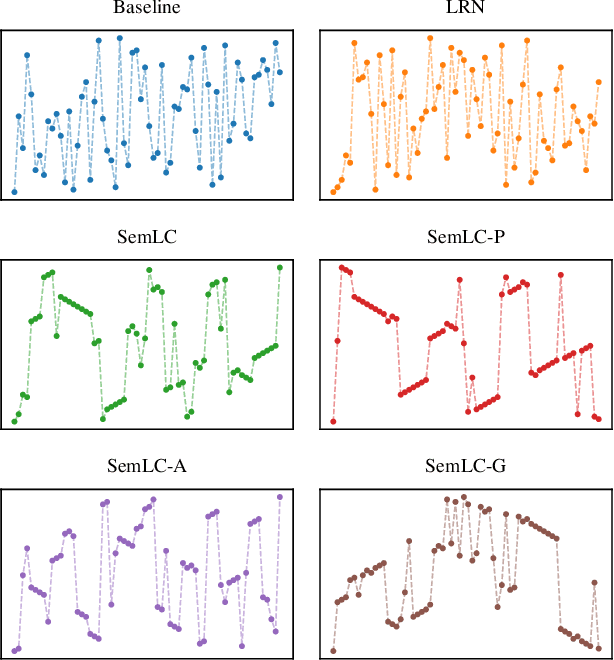Dávid Sebők
Domain Adaptation of Networks for Camera Pose Estimation: Learning Camera Pose Estimation Without Pose Labels
Nov 29, 2021



Abstract:One of the key criticisms of deep learning is that large amounts of expensive and difficult-to-acquire training data are required in order to train models with high performance and good generalization capabilities. Focusing on the task of monocular camera pose estimation via scene coordinate regression (SCR), we describe a novel method, Domain Adaptation of Networks for Camera pose Estimation (DANCE), which enables the training of models without access to any labels on the target task. DANCE requires unlabeled images (without known poses, ordering, or scene coordinate labels) and a 3D representation of the space (e.g., a scanned point cloud), both of which can be captured with minimal effort using off-the-shelf commodity hardware. DANCE renders labeled synthetic images from the 3D model, and bridges the inevitable domain gap between synthetic and real images by applying unsupervised image-level domain adaptation techniques (unpaired image-to-image translation). When tested on real images, the SCR model trained with DANCE achieved comparable performance to its fully supervised counterpart (in both cases using PnP-RANSAC for final pose estimation) at a fraction of the cost. Our code and dataset are available at https://github.com/JackLangerman/dance
Biologically Inspired Semantic Lateral Connectivity for Convolutional Neural Networks
May 20, 2021



Abstract:Lateral connections play an important role for sensory processing in visual cortex by supporting discriminable neuronal responses even to highly similar features. In the present work, we show that establishing a biologically inspired Mexican hat lateral connectivity profile along the filter domain can significantly improve the classification accuracy of a variety of lightweight convolutional neural networks without the addition of trainable network parameters. Moreover, we demonstrate that it is possible to analytically determine the stationary distribution of modulated filter activations and thereby avoid using recurrence for modeling temporal dynamics. We furthermore reveal that the Mexican hat connectivity profile has the effect of ordering filters in a sequence resembling the topographic organization of feature selectivity in early visual cortex. In an ordered filter sequence, this profile then sharpens the filters' tuning curves.
 Add to Chrome
Add to Chrome Add to Firefox
Add to Firefox Add to Edge
Add to Edge